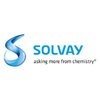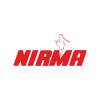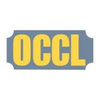Filter interviews by
otsuka chemical india Operator Interview Questions and Answers for Experienced
otsuka chemical india Operator Interview Experiences for Experienced
2 interviews found
Interview Questionnaire
2 Questions
- Q1. Ask about permits and ask questions plant related and types of reactors
- Q2. Plant related working permits types of reactors and ask questions from chemistry
I applied via Walk-in and was interviewed in Mar 2021. There was 1 interview round.
Interview Questionnaire
6 Questions
- Q1. In which product are you work.
- Q2. Boiling point,,?
- Q3. What is SOP?
- Ans.
SOP stands for Standard Operating Procedure.
SOP is a set of step-by-step instructions to carry out routine tasks.
It ensures consistency and quality in the output.
SOPs are used in various industries like healthcare, manufacturing, and aviation.
Examples of SOPs include laboratory procedures, assembly line instructions, and emergency response plans.
- Q4. Types of fire
- Ans.
There are five types of fire: Class A, Class B, Class C, Class D, and Class K.
Class A fires involve ordinary combustibles such as wood, paper, or cloth.
Class B fires involve flammable liquids or gases such as gasoline or propane.
Class C fires involve electrical equipment such as appliances or wiring.
Class D fires involve combustible metals such as magnesium or titanium.
Class K fires involve cooking oils and fats common
- Q5. How to control fire.
- Ans.
To control fire, one must remove the fuel source, cut off the oxygen supply, or use a fire extinguisher.
Remove any flammable materials from the area
Turn off any gas or electrical sources that may be fueling the fire
Use a fire extinguisher or water to put out the flames
If possible, cover the fire with a non-flammable material to cut off the oxygen supply
- Q6. Melting point
Interview Preparation Tips
otsuka chemical india Interview FAQs
Tell us how to improve this page.
otsuka chemical india Interviews By Designations
- otsuka chemical india Operator Interview Questions
- otsuka chemical india Chemist Interview Questions
- otsuka chemical india Deputy Manager Instrumentation Interview Questions
- otsuka chemical india Mechanical Engineer Interview Questions
- otsuka chemical india Mechanical Fitter Technician Interview Questions
- otsuka chemical india Production Operator Interview Questions
- otsuka chemical india Security Supervisor Interview Questions
- otsuka chemical india Senior Executive Interview Questions
- Show more
Interview Questions for Popular Designations
- Machine Operator Interview Questions
- Plant Operator Interview Questions
- CNC Machine Operator Interview Questions
- CNC Operator Interview Questions
- Utility Operator Interview Questions
- Senior Operator Interview Questions
- Boiler Operator Interview Questions
- Assembly Operator Interview Questions
- Show more
People are getting interviews through
Interview Questions from Similar Companies
otsuka chemical india Operator Reviews and Ratings
based on 8 reviews
Rating in categories
|
Operator
48
salaries
| ₹1.2 L/yr - ₹3.3 L/yr |
|
Officer
38
salaries
| ₹1.9 L/yr - ₹4.8 L/yr |
|
Process Operator
26
salaries
| ₹1.9 L/yr - ₹3 L/yr |
|
Process Officer
24
salaries
| ₹2.5 L/yr - ₹7.9 L/yr |
|
Executive
19
salaries
| ₹3.6 L/yr - ₹5.3 L/yr |

BASF

Pidilite Industries

Clariant Chemicals

Solvay Specialities
Calculate your in-hand salary
- Home >
- Interviews >
- otsuka chemical india Interview Questions >
- otsuka chemical india Operator Interview Questions for Experienced
















